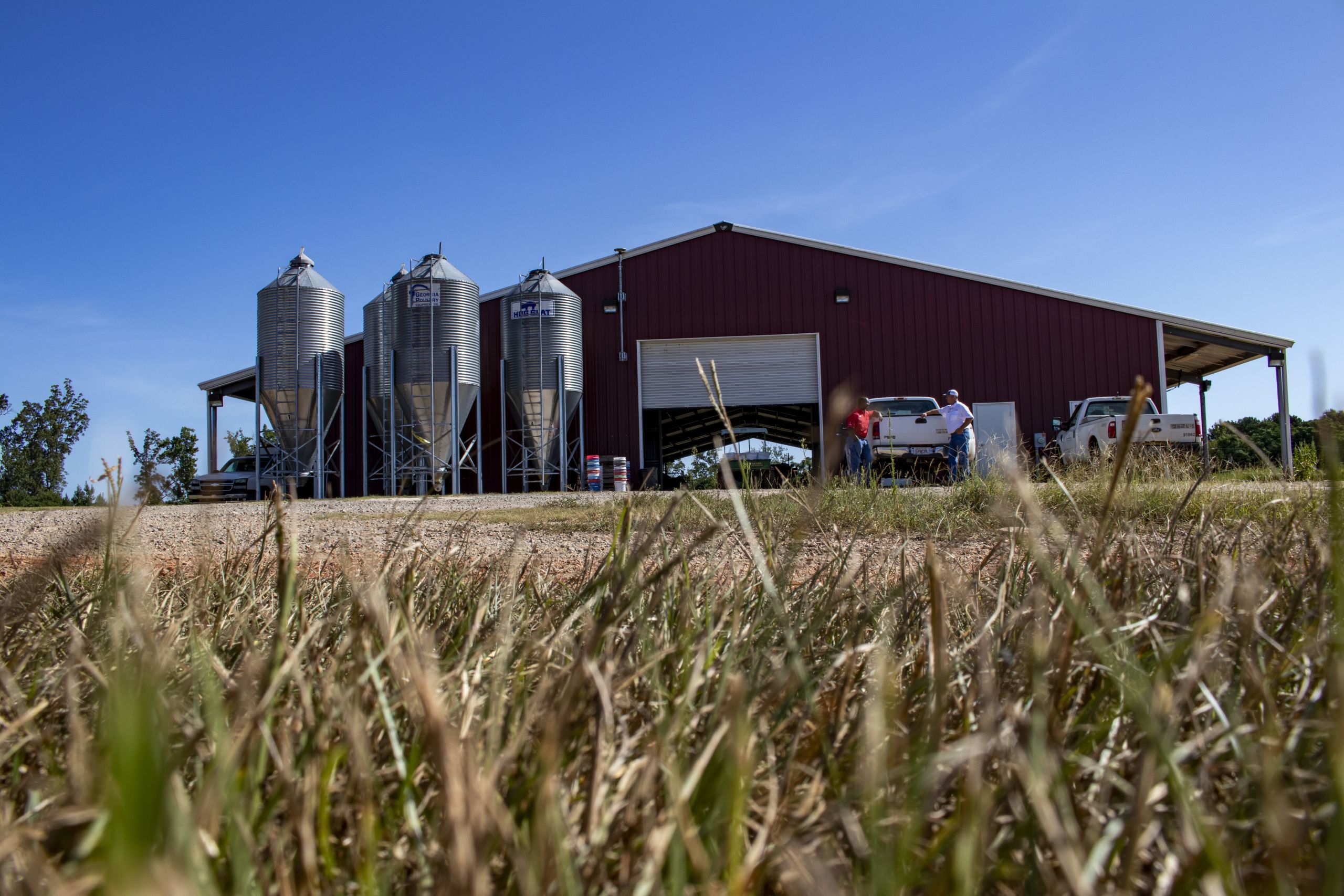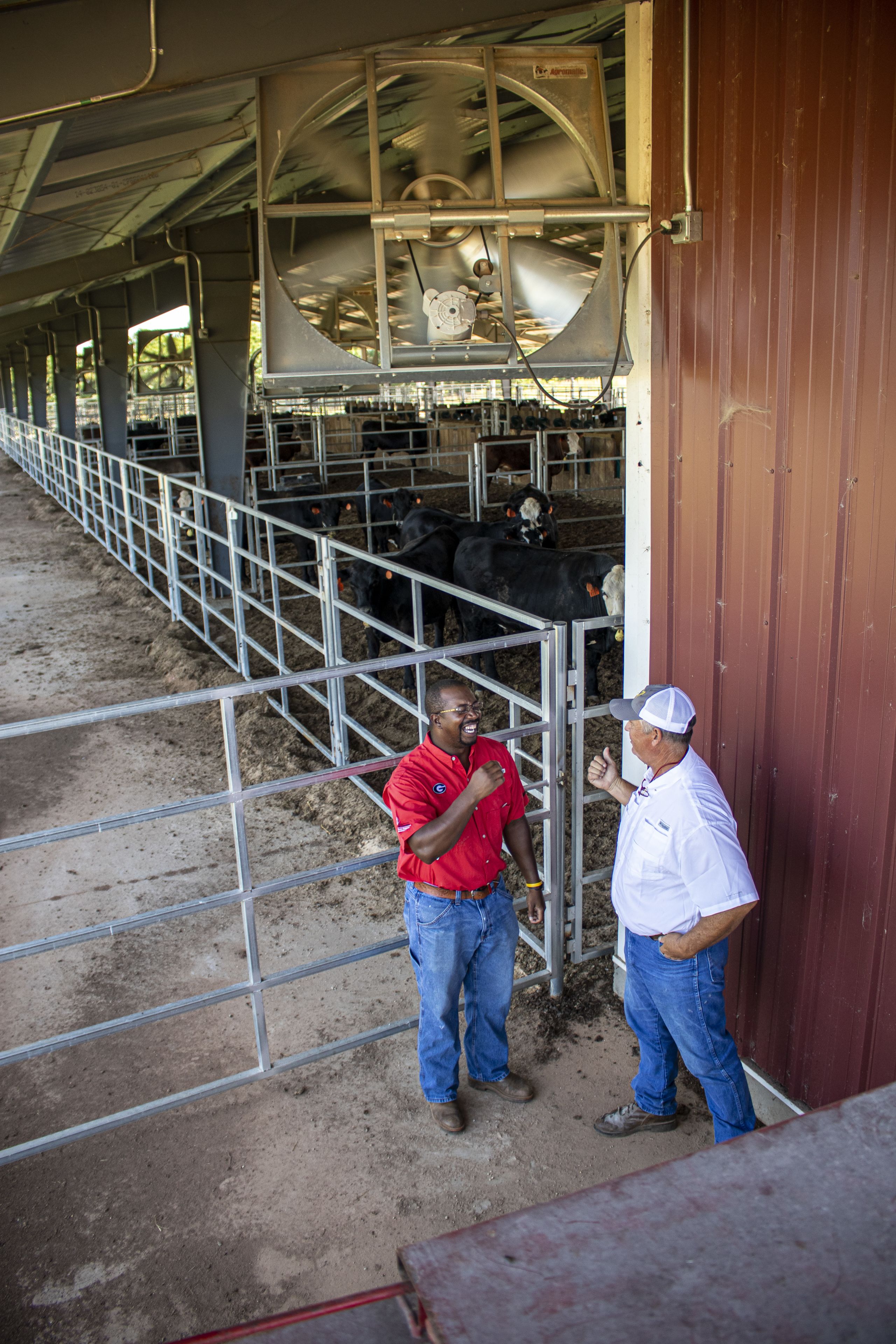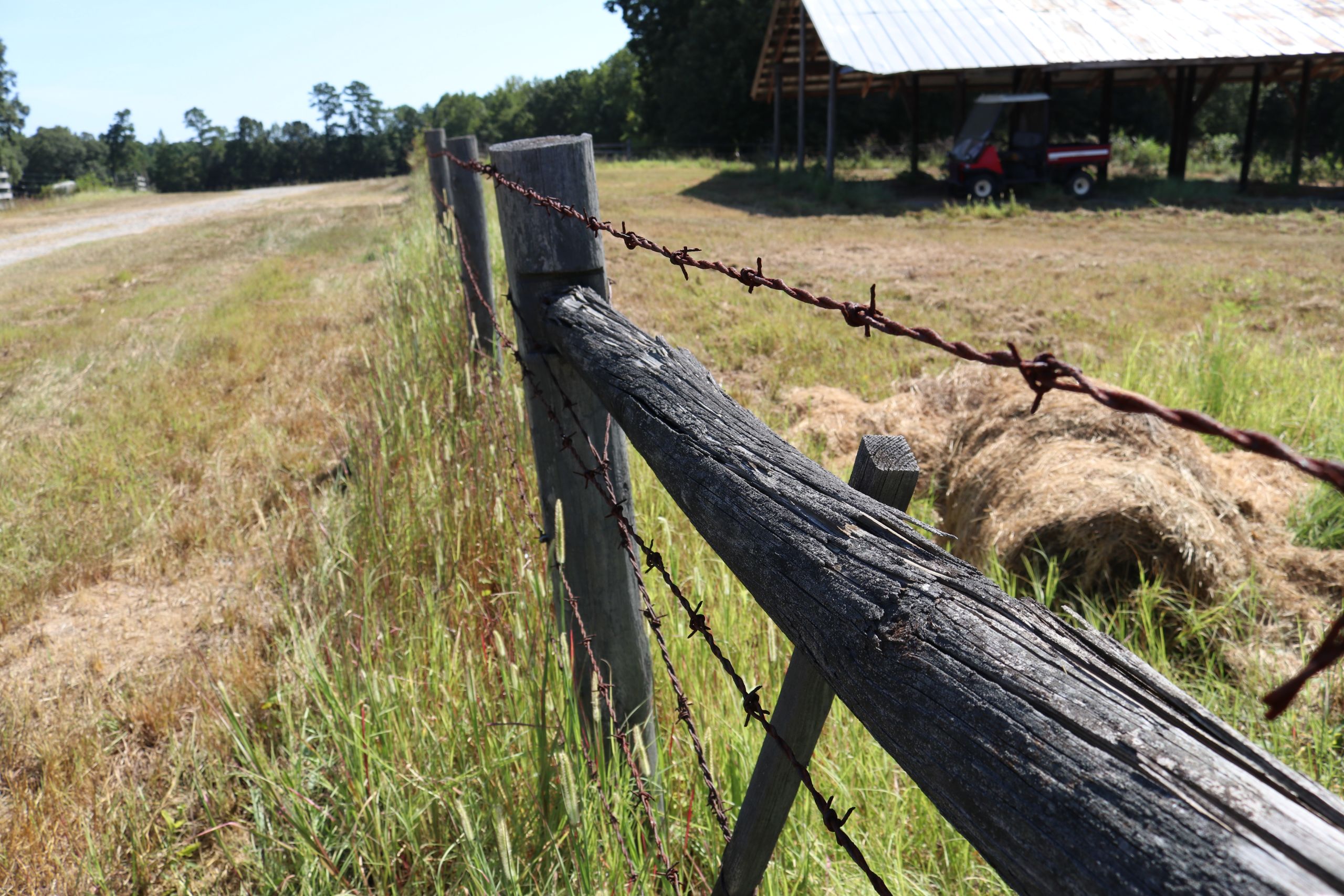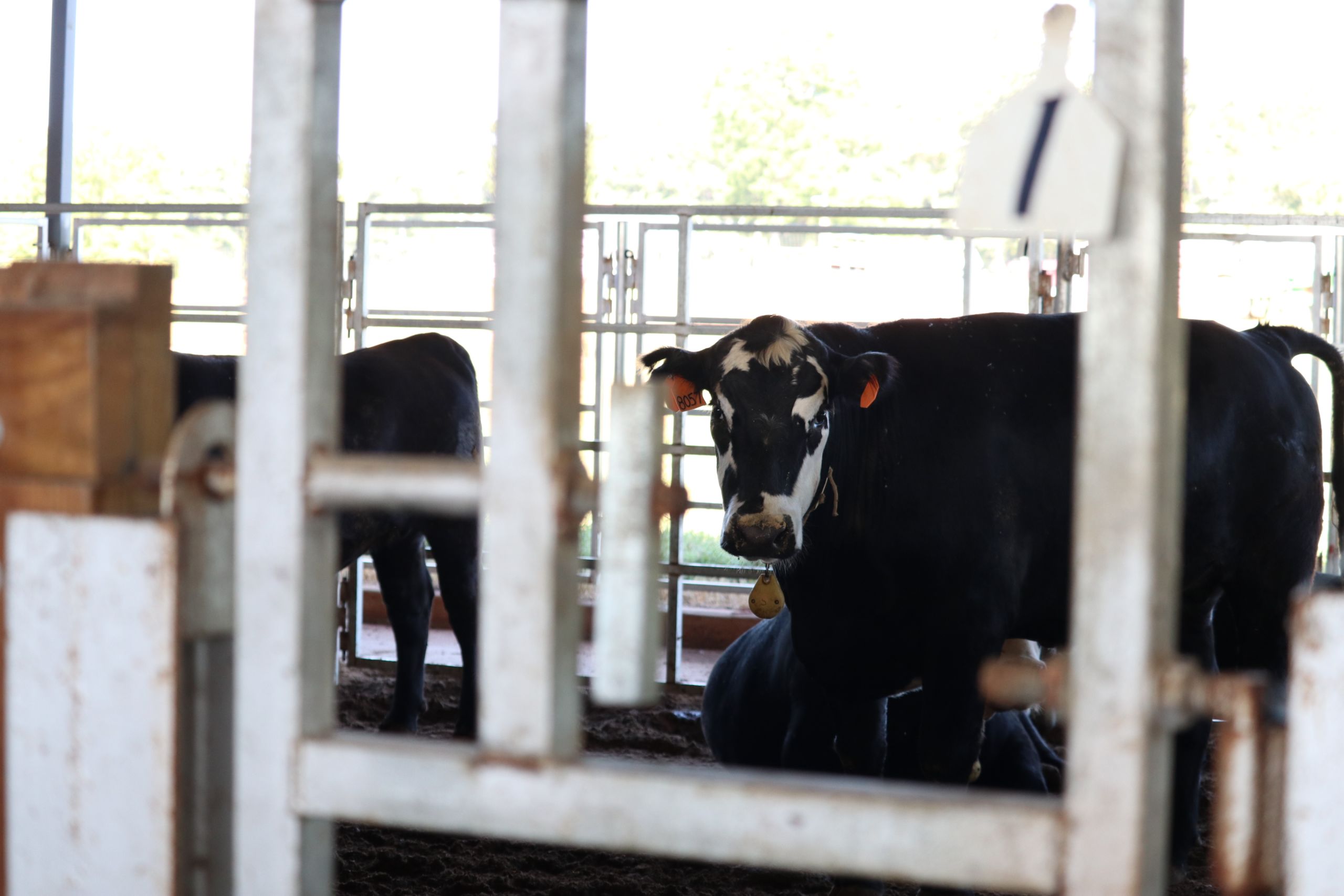Data Farming
UGA research farm examines beefy questions for cattle farmers

Influence on
RESEARCH

Unlike most laboratories, running the University of Georgia Eatonton Beef Research Unit (EBRU) in Eatonton, Georgia, is a 365-day-a-year, 24-hour-a-day operation.
Fortunately for Charles Trumbo (BSA — Agricultural Education, ’11), agricultural specialist and assistant foreman at the EBRU, the commute can’t be beat.
Trumbo lives in a neat, white farmhouse a literal stone’s throw from the EBRU headquarters, a small, square brick building that serves as the public face of the sprawling, 2,000-acre spread, which is difficult to distinguish from neighboring family farms and pastures.
The largest and oldest UGA-owned farm in the state, the sizeable acreage is needed to house the farm’s 450 head of beef cattle, which are used to run research studies for faculty in the College of Agricultural and Environmental Sciences Department of Animal and Dairy Science (ADS).
Unit farm manager Kip McMillan (BSA — Animal Science, ’90) and the rest of the staff live nearby as well, and McMillan is charged with keeping watch over the day-to-day operations of the farm and the important research being performed there.
A large open-air barn at the farm recently housed a heat-stress research study being conducted by ADS associate professor Alexander Stelzleni.
On one side of the 10,000 square-foot structure, Hereford-Angus cross cattle were housed in several pens cooled by large, industrial fans that whir overhead. On the other side, an equal number of bulls recline or peer curiously out of identical pens, minus the fans. Other animals in the study are out in the pastures with no cooling methods.
“Dr. Stelzleni’s study is looking at how heat stress affects feedlot cattle for the industry out West,” says McMillan. “We carefully monitor the animals in the study, controlling their feed to ensure they are all raised with the same nutrition.”
Magnetic pendants hanging from collars around their necks ensure that each animal eats only from its own designated trough, allowing researchers to calculate exactly how much feed each animal eats each day, eliminating the need for estimation.
Trumbo assists with Stelzleni’s study on heat stress and with other research projects. Similar to UGA dairy research on the effects of heat stress on milk content, this research examines how different levels of heat stress affects the meat of beef cattle.
“The purpose of this experiment is to show the difference of the marbling of the steer in those three different types of living conditions,” Trumbo said.
While such stringent data collection and monitoring is out of the ordinary for most commercial farms, McMillan said it serves a vital purpose for those producers.
“You can put a dollar value on those traits and show the value of different methods. That’s the purpose of a trial. Not everyone is set up for research like we are. We can feed each animal and control their environment, it is a lot more precise,” said McMillan, who grew up on his family’s farm in Enigma, Georgia, and gravitated back to agriculture while a student at UGA.
The majority of the farm comprises pastureland where cows and the calves born on the farm range and graze. It takes almost an hour to see the entire farm, either in one of the farm’s maintenance vehicles or on one of the resident horses, which belong to the university or farm staff.
Faculty from the CAES Department of Crop and Soil Sciences can frequently be found in the fields of fescue and Bermudagrass, performing soil testing or studying forage patterns and soil health.
A recent study, the “Better Grazing Project,” involved ADS faculty Lawton Stewart (BSA — Animal Science, ’01) and Dennis Hancock along with Dory Franklin, a scientist in the Department of Crop and Soil Sciences. The research was designed to compare soil health in fields used in rotational grazing versus free range grazing.
Trumbo said modular fencing was used to contain one group of cattle in certain areas of pasture that were rotated every three days. The other group of cattle were allowed to range freely in a different pasture. After the study period, Franklin tested soil samples from various areas in both pastures, with results showing that soil from the rotational pastures was more highly enriched with nutrients than samples from the free-range pastures.
“Producers can use this information to make decisions on grazing and to improve forage growth on their land,” Trumbo said.
The farm can be dated back to 1938 when the University System of Georgia Board of Regents began leasing 14,315 acres of land, mostly in Putnam County, for what was initially called the Eatonton Project of the Georgia Experiment Station.
In 1954, the land was deeded to the Board of Regents to be used as an agricultural experiment station. The research program has grown over time and management of the unit, then known as the Central Georgia Research and Education Center, was transferred to ADS in 2012.
“The research performed here translates to dollars for producers so they are able to fine-tune their operations,” McMillan said. “We raise cattle here, but our primary focus is research and education. We are not here to compete with the man down the road raising cows. That’s not our purpose. We are a resource for teaching and research.”

Trumbo (left) and McMillan are two of the many support staff who help keep things running at CAES research facilities around the state.
Trumbo (left) and McMillan are two of the many support staff who help keep things running at CAES research facilities around the state.


